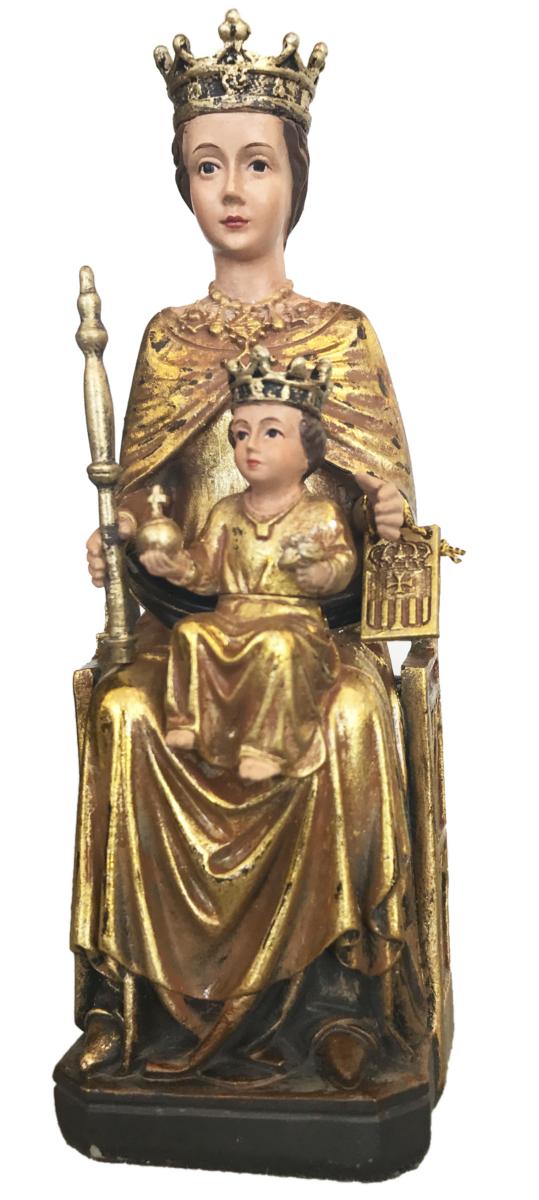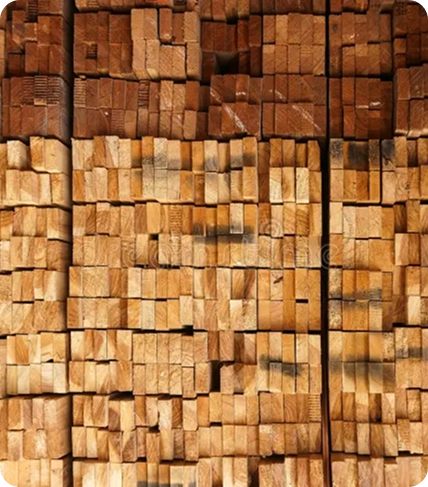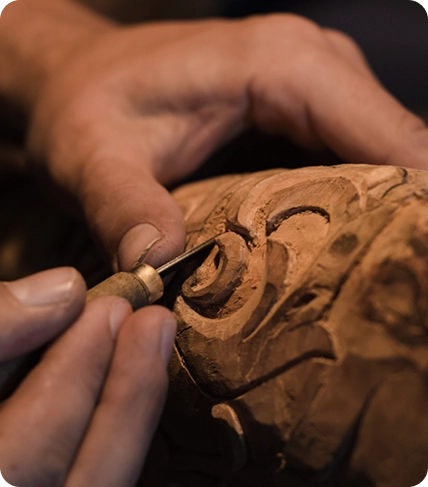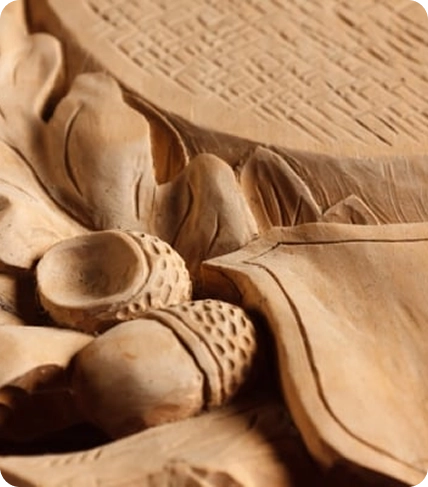Every element of this statue has been carefully modelled to capture the sacred essence and elegance of Our Lady of Mercede. The peaceful facial expression and the delicate tones of the painting convey a message of love and protection. Our Lady of Mercede, also known as Our Lady of Mercede or Virgin of Mercede, is a highly venerated figure in Catholic tradition. Her full name is ‘Mary Most Holy of Mercede’, and she is mainly celebrated for her role as liberator of Christian slaves.
Devotion to Our Lady of Mercede originated in the 13th century, when, according to tradition, the Virgin Mary appeared to Pietro Nolasco, a Catalan merchant. During this apparition, the Virgin encouraged him to found a religious order dedicated to the liberation of Christians held in slavery by the Moors. This order became known as the Order of the Mercedaries, founded on 10 August 1218 in Barcelona, with the approval of King James I of Aragon and under the protection of the Pope.
The title ‘Mercede’ derives from the Latin ‘merces’, which means ‘mercede’ or ‘ransom’. The order of the Mercedarians had the specific task of collecting ransom money for prisoners and working for their liberation, a task symbolised by the chain often found in representations of Our Lady of Mercede.
The feast of Our Lady of Mercede is celebrated on 24 September. During this day, processions and religious celebrations are held, especially in Spain, Latin America and other areas where the Mercedarian Order has had a significant impact.
Our Lady of Mercede is often depicted wearing a white dress and a blue mantle, holding the baby Jesus in her arms. She is sometimes depicted holding chains, symbolising the liberation of slaves, or with her arms outstretched in a gesture of welcome and protection.
This veneration is an example of how faith can inspire concrete actions of solidarity and social commitment, keeping hope alive among those who suffer injustice.










